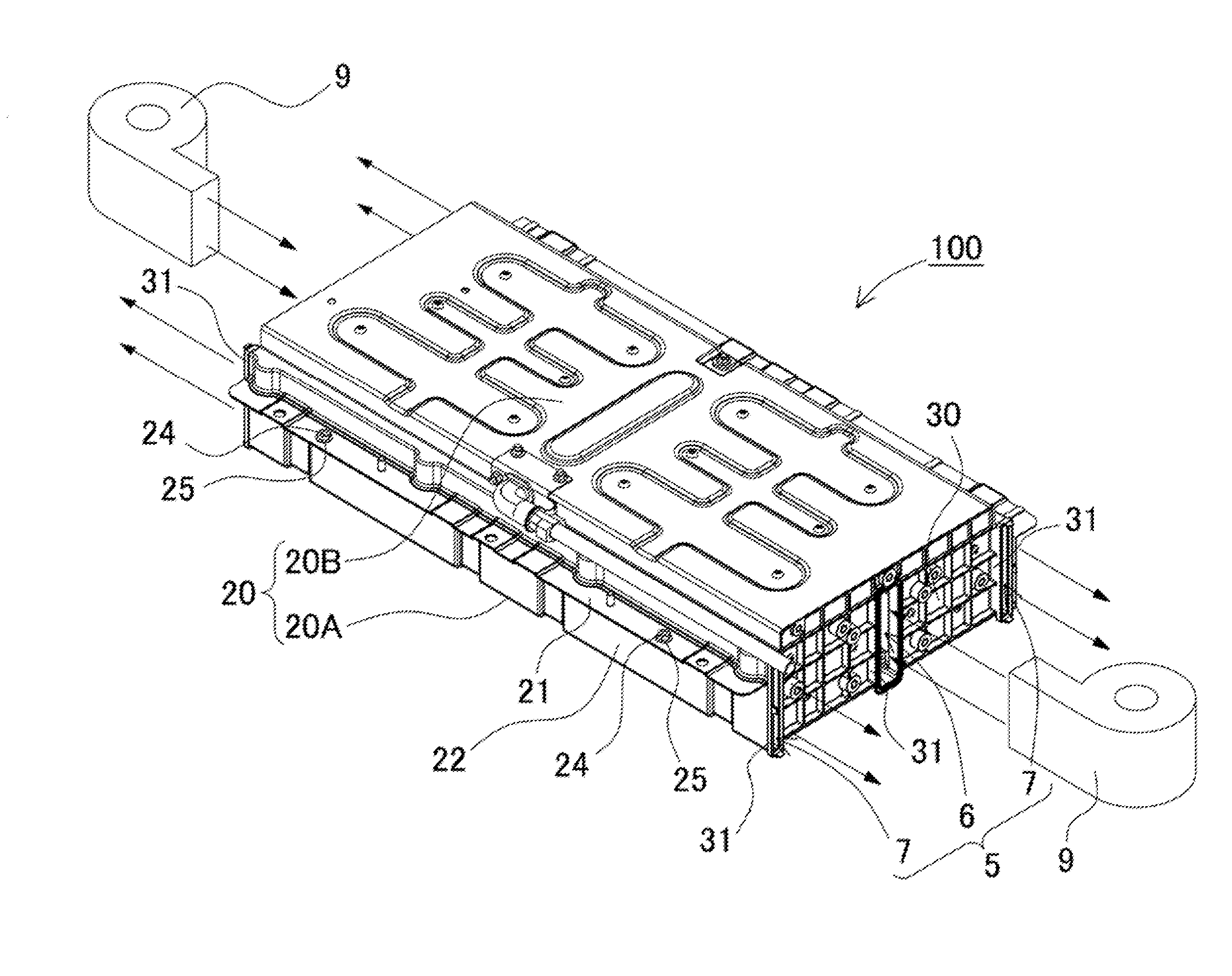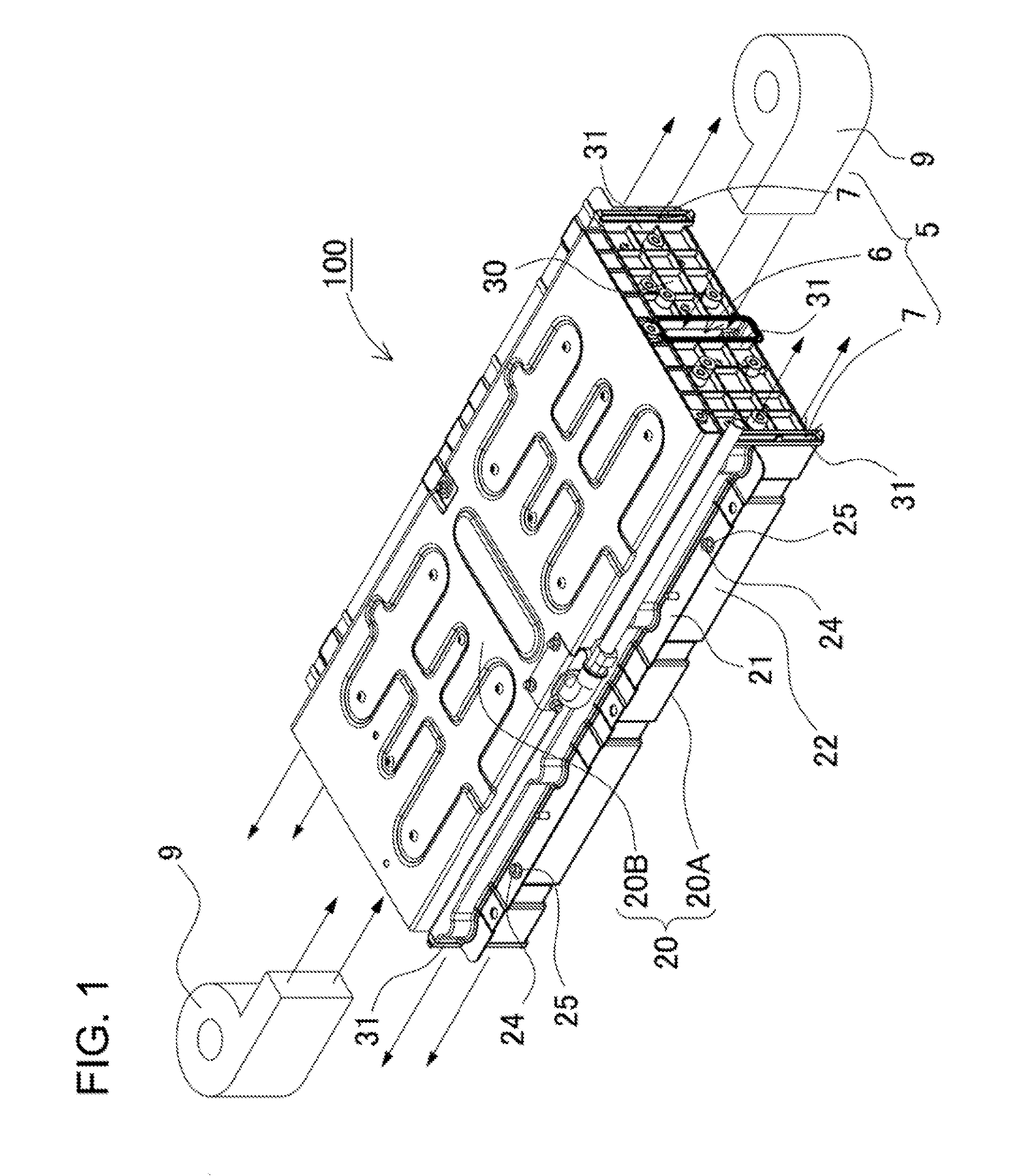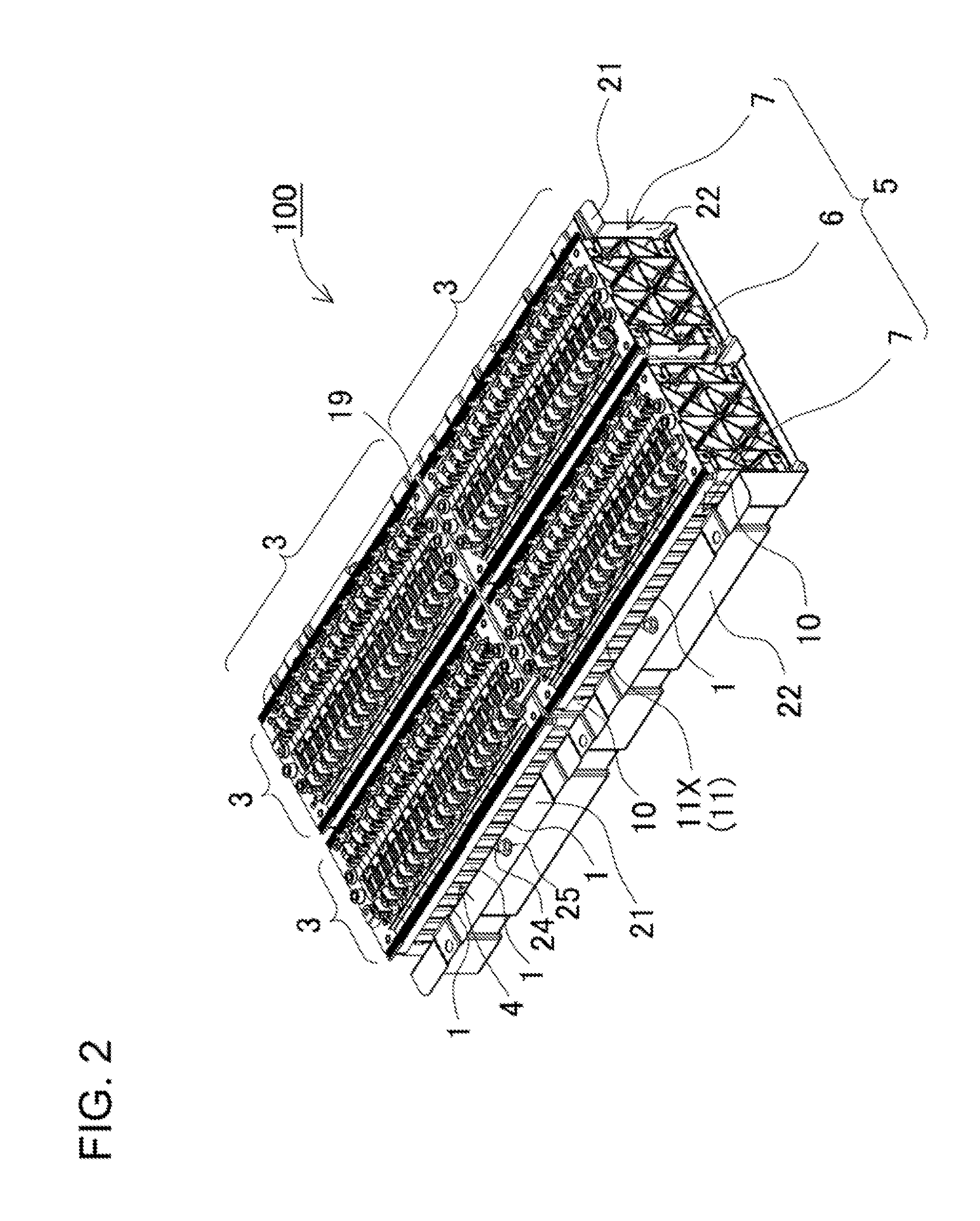Power supply device with battery cell cooling mechanism and vehicle including the same
- Summary
- Abstract
- Description
- Claims
- Application Information
AI Technical Summary
Benefits of technology
Problems solved by technology
Method used
Image
Examples
embodiment 2
[0068]In the aforementioned power supply device has been described that includes the inlet duct arranged between the battery blocks arranged in parallel to each other, and the outlet ducts arranged outside the battery blocks so that cooling gas is blown from the central part to the outside parts of the power supply device. However, the construction for blowing cooling gas to the battery block is not limited to this construction. For example, the inlet ducts can be arranged outside the battery blocks, while outlet duct can be arranged between the battery blocks so that cooling gas is blown from the outside parts to the central part of the power supply device. FIG. 8 shows this type of power supply device as an embodiment 2. In the power supply device 200 according to the embodiment 2 shown in FIG. 8, inlet ducts 56 are arranged in parts outside the two rows of battery blocks 3, and an outlet duct 57 is arranged in the part between the two rows of battery blocks 3 and communicates wit...
embodiment 3
[0072]The aforementioned power supply device has been described that includes the battery blocks 3, which are arranged in parallel to each other in two rows, and the air ducts 5 and 55, which are arranged in a part between the two rows of battery blocks 3 and in parts outside the two rows of battery blocks 3. However, the power supply device can be composed of one row of battery blocks. In the power supply device 300 according to an embodiment 3 shown in FIG. 9, two air ducts 75 are arranged on the both sides of one row of battery blocks 3. One of the two air ducts 75 serves as an inlet duct 76, while the other of the two air ducts 75 serves as an outlet duct 77. In this power supply device 300, as shown by arrows in FIG. 9, cooling gas is forcedly blown from the inlet duct 76 toward the outlet ducts 77 by the blower mechanism 9 to cool the battery cells 1. The cooling gas is forcedly blown from the inlet ducts 76, and then cooling gas flows pass through the cooling gaps 4 to cool t...
PUM
 Login to View More
Login to View More Abstract
Description
Claims
Application Information
 Login to View More
Login to View More - R&D
- Intellectual Property
- Life Sciences
- Materials
- Tech Scout
- Unparalleled Data Quality
- Higher Quality Content
- 60% Fewer Hallucinations
Browse by: Latest US Patents, China's latest patents, Technical Efficacy Thesaurus, Application Domain, Technology Topic, Popular Technical Reports.
© 2025 PatSnap. All rights reserved.Legal|Privacy policy|Modern Slavery Act Transparency Statement|Sitemap|About US| Contact US: help@patsnap.com



